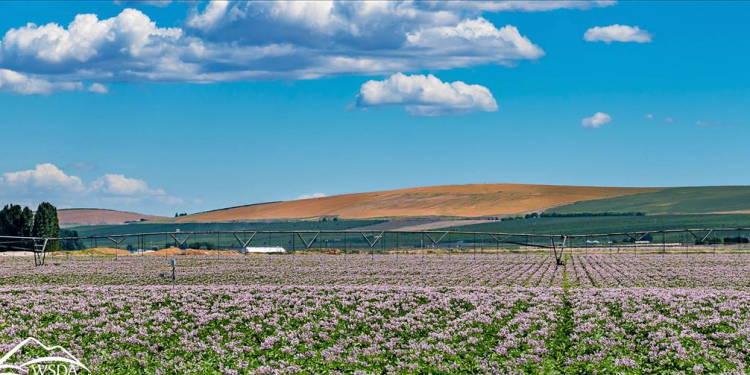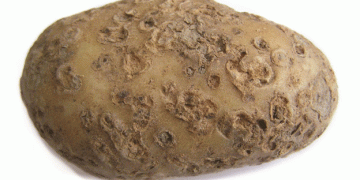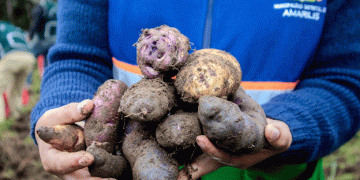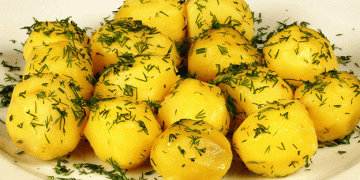For potato growers in Idaho and Washington — the two most productive potato-growing states in the country — the lack of rainfall thus far hasn’t hurt farmers’ access to irrigation water. That’s due to ample surface water from winter snow in the mountains.

“The very vast majority of our irrigation comes from surface water generated by snow melt. We had really good snowpack, so our streams are all flowing good,” said Chris Voigt, the executive director of the Washington State Potato Commission, which is based in Moses Lake in the heart of the Columbia Basin, the state’s biggest potato-growing region. The Basin has received little moisture, but that shouldn’t hurt the potato crop, Voigt said.
“This year’s drought will have very limited impacts to potato production because of the good snowpack we had in Washington and British Columbia,” he added.
In Idaho, conditions are drier than normal, although not as dry as the Columbia Basin, much of Oregon and California. Idaho Potato Commission Industry Relations Director Travis Blacker said there looks to be enough water for irrigation this year, but the situation already has farmers feeling anxiety about 2022.
“From what I gather, most growers will be fine this year,” Blacker said. “It’s next year they are worried about, especially if we don’t get enough snow.”
Across the country in Maine, where a 2020 drought led to a 20% yield reduction in last year’s crop, conditions are dry once again, said Maine Potato Board Executive Director Don Flannery.
“We are dry and at this point looking a lot like last year, hopefully we will receive more rain than last year,” he said.
In North Dakota, severe drought plagues much of the state. In the Red River Valley, where a large portion of the state’s commercial potatoes are grown, things haven’t been as extreme.
“We’re not getting the big rains that we have had in the past, but it seems to be enough to keep things from deteriorating,” Ted Kreis, Northern Plains Potato Growers Association marketing director, told Ag Week.
In Wisconsin, conditions too had been dry, but a significant amount of rainfall fell in late June. Things were progressing fine with enough water for irrigation, but the sudden influx of rain and higher-than-normal temps were more of an issue, said Wisconsin Potato & Vegetable Growers (WPVGA) Association Executive Director Tamas Houlihan.
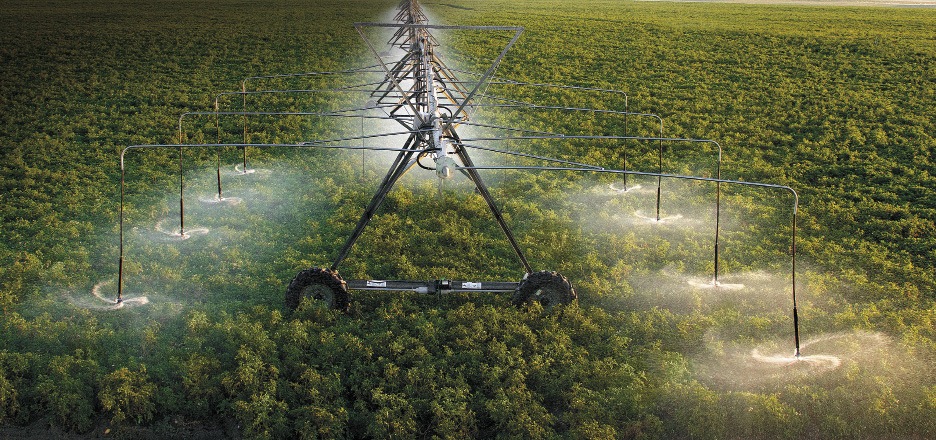
“The Wisconsin growers were more concerned with the high heat and the recent heavy rainfall events,” Houlihan said via email. “The statement was made (at a recent WPVGA meeting) that ‘we can turn water on when we need it, but we can’t turn it off when Mother Nature gives it to us!’ One south-central Wisconsin grower reported receiving 5 inches of rain in a four-day period from June 24 through June 27.
“All the growers were pleased with how the crop was progressing thus far. They cautioned that’s it’s still too early to tell how the crop will end up in terms of yield and quality.”
